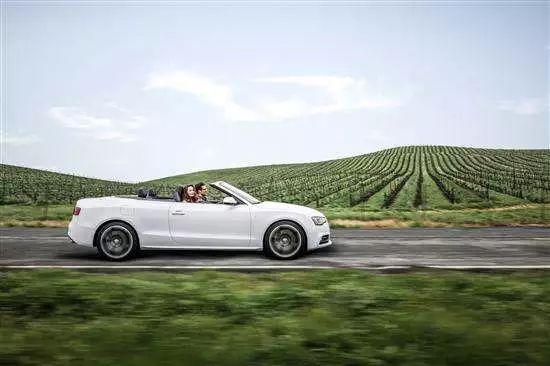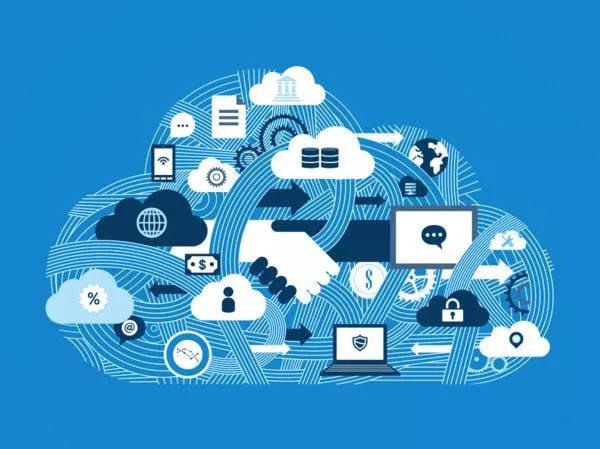The future of personal travel scenarios will usher in a huge transformation, more inclined to disruptive technology and its innovative business model.
There is no doubt that the automotive industry is facing subversion. The dramatic changes in consumer behavior are changing the status quo in the automotive industry, especially as people pay more attention to all in-car experiences, not just the driving experience. Rather, OEMs and major suppliers must change their products, even their own capabilities and organizational structures, to survive in this new era.
The changes facing the automotive industry have brought huge risks and opportunities. When we expect the scale of the entire industry to grow from today's 3.5 trillion US dollars to 6.6 trillion US dollars in 2030, traditional technology and business are facing From today's 98% market share fell to 50% in 2030, the industry's growth will be led by disruptive technological developments such as autonomous driving, car networking, electrification, and shared travel. The players in the traditional auto industry have to do at least the following four points:
1. Have critical control points throughout the system
2. Monetization of income and cost proficient data
3. Implement flexible two-speed research and development
4. Fully adopting Industry 4.0 technology
Rapid change situation
The global automotive industry's profits are currently at its highest point in history. Indeed, the core revenue of the OEM has reached $125.4 billion in 2016, and the industry has 7% revenue growth. However, the entire industry relies heavily on two markets, with three-quarters of its profits coming mainly from China and North America. Many people in the industry can't help but ask, is the automotive industry at its peak?
Personal travel has made tremendous progress in the past 130 years and brought great value to the society, but there is still a lot of room for growth, especially at the utilization, efficiency and security level.
Moreover, the traditional rules of competition are rapidly changing. We can see that investment in recent years has highlighted the desire of automakers to tap the potential and capabilities of the future car. Over the past five years, we have witnessed a number of high-profile investments that are worthy of attention in four emerging technology-driven trends, namely autopilot, in-vehicle connectivity, electrification and more recent shared travel. Since 2010, these 11 areas have received $1.11 billion in external investments that have been disclosed.
Technology companies are far ahead of traditional OEMs. In the past three years alone, the top four OEMs have completed 25 transactions in the above four areas, but the two technology companies that completed the most transactions have completed 170, also focusing on creating the future. The ability of the car. Therefore, in today's increasingly crowded and fast-paced market, traditional car companies must fundamentally reshape their products, supplies and business models in order to remain competitive.
Twenty years ago, the killer application of a car, the most decisive factor in determining the behavior of buying a car, was the driving experience. Today, this factor has become a so-called “in-car experience†– the need for autonomous driving, in-vehicle interconnection, electrification, and sharing, such as autonomous vehicles, connected parking services, OTA upgrades, recall checks, and network security. , targeted ad serving, and more.
In McKinsey's survey of future travel, 86% of consumers are willing to switch to a vehicle with some advanced driver assistance. In another survey on connected and self-driving cars, 37% of respondents expressed their willingness to change their car brands because they have the same functionality for applications, data and media.

In order to better enhance the in-car experience, the automotive industry needs to shift the focus of the product from the original hardware driver to the software driver. The role of the software level is gradually increasing, and will grow more sharply in the future. McKinsey predicts that software content will account for 30% of vehicles in 2030, a significant increase from the current 10%.
The future of personal travel scenarios will usher in a huge transformation, more inclined to disruptive technology and its innovative business model. McKinsey predicts that 50% of the 6.6 trillion dollars expected in the entire automotive industry in 2030 will come from disruptive technology or business models, compared to today's exponential growth. We do expect that the growth of the industry will mainly come from this, and the contribution of traditional technology and business models will only be the same as the current one. Therefore, in the face of this imminent change, the OEM needs to fully evolve from research and development to sales to remain competitive.
These emerging trends will combine the latest technologies and are gradually changing consumer preferences, and new-entrant competitors will fundamentally change the relationship between consumers and cars. In the face of the subversion of emerging trends, it has reached the four necessary changes mentioned above.
Have critical control points throughout the system
In addition to technology, just like other forms of subversion, we look forward to the redistribution of profits between different segments of the automotive industry and between different car companies. Historically, whenever a subversive role enters, the highest profits tend to flow to those with key control points. Therefore, people in the automotive industry need to occupy a strong commanding height, grasp the most important elements of consumers in the industry chain and have the most powerful influence on products and services, and get key control points.
First, in the face of rapidly changing technologies and market dynamics, car companies must find and evaluate the most attractive ones based on several different factors, such as profit margins, required competitiveness, and the ability to create sustainable advantages. The function of the driver (drive assist function, powertrain, infotainment system, chassis or interior interconnection function, etc.). Once the priorities of these attractive features are determined, the next step is to determine the optimal "access model" for each level, cloud technology applications, UI, intermediate devices and services, operating systems, visualization, Hardware, etc.
For example, in an infotainment system, UI and cloud content can have a significant impact on the user experience, and thus become a key control point for infotainment systems. For example, in the driver assistance system, the cloud content used in high-precision maps, the algorithms in the driving process, the precise sensing of the position and the hardware sensing equipment required for the driving experience are also the key control points of the driving assistance system. .
Monetization of revenue and cost proficient data
The automotive industry is witnessing the rapid growth of big data, and the data generated and collected in the car is not only quantitative but also unprecedented in diversity. Today, cars can generate 25G of data every day, mainly from internal car networks and ECUs, and future autonomous vehicles can record everything that can be recorded. Intel expects to generate 4000G of data every day.
These data will be applied to a wide range, equivalent to the latest potential value resources in the automotive industry. Overall, these data-generated monetization opportunities can generate an equivalent of $750 billion in value in 2030.

These opportunities for car companies will come from the realization of big data, including B2B and B2C. Car data can be used to generate targeted paid content or advertisements, such as POIs in maps. Autonomous vehicles can be driven by computer formations, and fuel economy can be improved by 3-5% by pre-judging and taxiing before red light. For consumers, convenience is the most important. Automatic search, concierge service, reservation service, parking payment, etc. are all consumer-related monetization opportunities.
In order to seize the opportunities of B2B and B2C at the same time, car companies need to identify which models and solutions are more compatible with their own advantages, but also need to overcome other data ownership, use cases, cross-functional execution, pricing models, big data. Key issues such as analysis and data security.
Flexible two-speed research and development
Historically, the R&D department of the car company used a linear, hardware-driven approach. With the gradual increase in software content, this approach will also face changes. At the same time, the use of talent will also be a challenge, because by 2030, the automotive industry will require three times as many software engineers.
To be credible and reliable at the software level, car companies need to adopt a more flexible software development process, just like those technology companies. More flexible software development means that the development cycle can be significantly reduced from the traditional 50-60 months to 6-24 months. At the same time, it is also possible to more clearly distinguish between the functions that have just been released and the functions that have been upgraded after OTA or other methods. A clearer distinction and greater flexibility minimizes the risk of software release calming and may result in a more flexible user presence.
But while a more flexible approach can lead to significant efficiency gains, it can also create conflicts with traditional hardware-driven R&D models. Because of the deep-rooted and significant differences, car companies need to prepare and adopt the so-called “two-speed R&D†strategy while maintaining two very different but closely related R&D lines, hardware drivers and software drivers.
To attract software development talent, car companies need to adopt a similar employment approach to startups. Car companies need to pay more attention to the observation of talents, let software managers rather than human resources to recruit, work environment or work place should be more attractive than technology companies.
Finally, car companies should not forget the artificial intelligence and automation technology in the software development process, which ensures that limited and valuable software development time can be used for the most important and professional value. This can increase the potential of software content development by another 30-50%.
Full adoption of Industry 4.0 technology
The automotive industry also needs to apply digital technology to maintain and develop production, quality, and operational flexibility. The automotive industry has demonstrated the impact of technologies like Lean and Six Sigma, but Industry 4.0 technology can continue to increase productivity by 20%, not only through the factory but also throughout the supply chain. the value of. These opportunities are not just hypothetical, they are now being applied and do not require excessive capital expenditures.
For example, Zengjin’s mainframe found that after using Industry 4.0 technology, a mature production line that was supposed to have been optimized has had a transformative impact. By applying more advanced analysis and automated tandem quality management to the machine, productivity is increased by 30%, waste rate is reduced by 80%, and time is reduced by 50%. They assembled CNC machines to produce crankshafts and used IoT sensors to acquire and monitor their performance data, and developed an algorithm to analyze data in real time to optimize tool position to increase throughput.
Of course, there are still many companies still trying to turn proof-of-concept into significant fundamental effects. McKinsey's findings suggest that full access to the effects of Industry 4.0 requires four steps.
First, the method is to align those decisive factors rather than incremental improvements.
Second, the goal is to focus on fundamental changes and focus on reducing the workload rather than making it more effective. .
Third, the mentality, thinking like a technology company, not a car giant.
Fourth, implementation, more flexible to digital transformation, rather than rigidly follow the textbook.
Compact Temperature Sensor We have many products in marine temperature sensors, and our small marine temperature sensors have been traveling in various oceans. Our sensors are not only used in ship mechanical equipment, but also used in freight yards. Our small marine temperature sensor can be used to monitor the marine mechanical equipment and the temperature and humidity in the warehouse. Moreover, our sensor has been used in the oil separator module for a long time, and its performance is very stable.
Compact Temperature Sensor,Small Temperature And Humidity Sensor,Smart Temperature Sensor,Hydraulic Temperature Sensor
Taizhou Jiabo Instrument Technology Co., Ltd. , https://www.jbcbyq.com